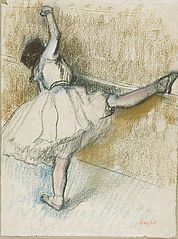
Despite the fact that stretching out dancers’ muscles is vital, there are many points to heed as you work towards a more supple, flexible body. In order to stretch safely and successfully, the body and muscles must be sufficiently warm: don’t hold static stretches (those held for longer than 30 seconds) before warming up. The stretches do increase flexibility but only once the body is warm. Stretching cold muscles achieves nothing and often leads to overstretching ligaments and tendons, increasing instability and resulting in pain. It also decreases the muscle’s ability to contract, resulting in less power and available strength once you start dancing.
The key to stretching effectively is to be incredibly warm, by first activating the muscles and getting blood flowing through the body before working toward greater flexibility and a more balanced body. Unfortunately, in a constant pursuit of greater flexibility, dancers have a tendency to favour extreme, and sometimes dangerous stretches, instead of following a gradual approach, creating weaknesses in their bodies. The first step in switching over to a safe stretching regime that increases muscle flexibility without sacrificing the stability needed for balances and the power needed for jumps is losing bad habits.
Often dancers get caught up with stretching one area of the body that they forget about the other muscles: if you stretch your hamstrings make sure you equate this when stretching your quadriceps. This means that creating imbalances in the body is less likely to happen. An additional method of countering this is by using a foam roller. This can be used when dancers are feeling tight in order to free up the connective tissue muscles before stretching them, decreasing muscles tension and pain. Foam rolling can be done prior to activity, even on cold muscles, or post-activity to release inhibited muscles and allows more freedom in a muscle that was otherwise restricted.
Image courtesy of Wikimedia Commons.
